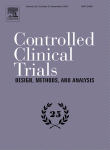Hmm, we have two very large trials mapping out a potential toxicity curve, 1)
UK FAST, a 915 patient multi institutional study demonstrating 30 Gy worse than 28.5 Gy whole breast once weekly and now 2)
UK FAST FORWARD, a 4096 patient multi institutional study demonstrating 27 Gy worse than 26 Gy whole breast given daily. Scarb says statistical fluke but
🤔.
Forgive me for asking the question on whether or not where there is smoke there is fire? In my eternal quest to provide the most efficacy for patients at the lowest toxicity cost, I am now a disobeyer of level 1 evidence and, oh my goodness, possibly even an "academic"
😱?
How dare I disrespect the great Livi, and his 520 patient single institution study not even appropriately powered to prove the points it wanted to prove and 10 year results presented in abstract form? Is this even "level 1" evidence? This fractionation does not even exist in any major current guidelines.
Agree that volume is a huge driver of toxicity in radiation and please do not distort my argument into whole breast = partial breast. However, I do believe what is good for the goose is also good for the gander however and am not buying into evilbooyaa's dose gradient argument here. Choosing APBI versus whole breast risk stratification and choosing the dose necessary to control microscopic disease in the breast are two separate issues. People acted like IMPORT-LOW (with its fake IMRT
😉) proving that 40/15 partial breast was acceptable was some earth shattering revelation when 1) we already knew APBI was appropriate in selected patients and 2) we knew 40/15 worked very nicely to control microscopic disease.
BTW this lowly community grunt grinding in a middling city signed a 30/5 plan today, but I did drop the coverage to 95/95%. Sue me
🙂 .


